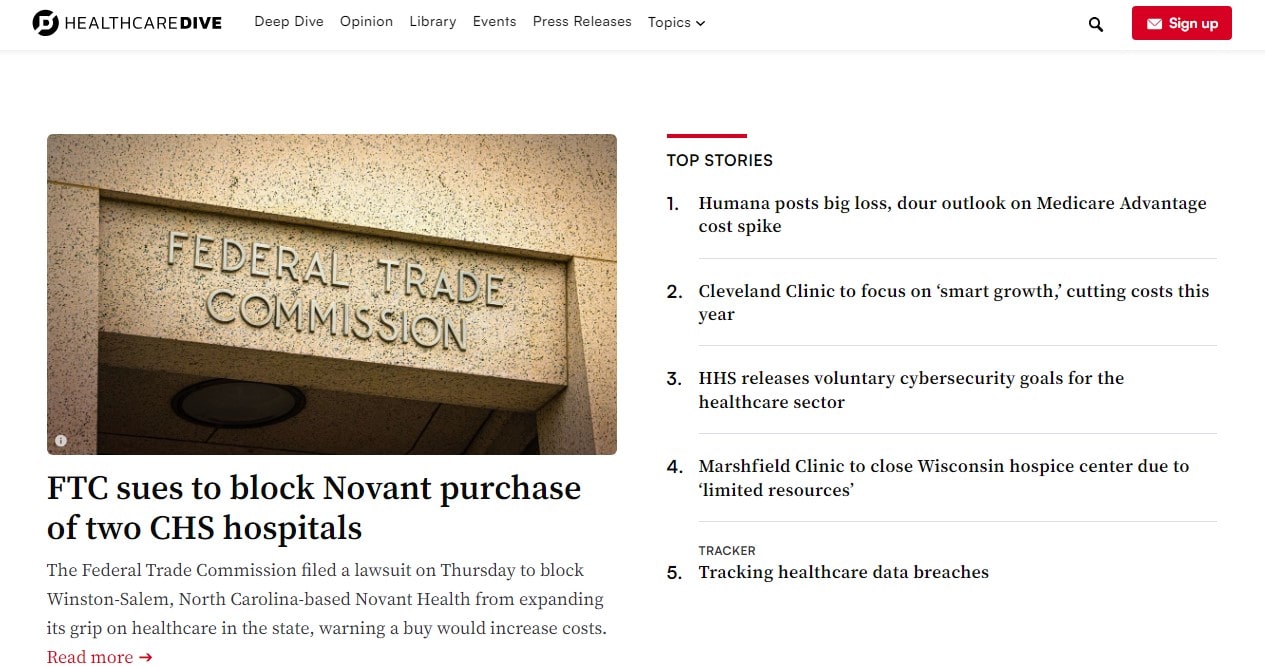In today’s data-driven world, innovative solutions across many industries rely on Big Data Analytics. Businesses could undergo a radical transformation as a result of big data’s ability to uncover hidden patterns and forecast trends. Envision an organization that can make more informed decisions and operate more effectively because all data is valuable. In industries such as banking, medicine, retail, schools, and transportation, this is not only a theory but a happening right now. The importance of utilizing this data-driven intelligence is something we at Plerdy fully get. Here we will examine how big data is changing the definition of success in the digital age, although it is also reshaping other industries. Come explore with us the fascinating realm of Big Data Analytics and all the ways it benefits our data-driven contemporary society.

Impact on Banking and Financial Services
In the dynamic world of banking and finance, big data analytics has emerged as a key player, revolutionizing the sector with unprecedented precision and insight. It’s transforming everything from fraud detection to personalized customer services, offering a glimpse into the future of finance.
Fraud Detection
In the realm of fraud detection, big data stands as a vigilant sentinel. Banks now analyze customer transaction patterns and behaviors in real-time, using advanced algorithms to detect anomalies signaling potential fraud. This proactive approach not only safeguards customer assets but also enhances trust in financial institutions. By integrating machine learning, banks can continuously adapt and improve their fraud detection strategies, staying ahead in the ceaseless battle against financial crime.
Risk Management
Risk management has been elevated to new heights with big data analytics. Financial institutions now employ sophisticated models to assess risks associated with loans, investments, and market movements. This data-driven approach enables banks to make informed decisions, balancing potential gains with associated risks. Big data also aids in regulatory compliance, ensuring that banks adhere to evolving financial regulations and standards.
Customer Relationship Optimization
Big data is revolutionizing customer relationship optimization. By analyzing transaction histories and interaction patterns, banks offer personalized services and product recommendations. Customer happiness, loyalty, and retention are all positively impacted by this targeted strategy. Banks can now anticipate customer needs, offering timely and relevant financial solutions, thus fostering a deeper, more meaningful relationship with their clients.
Personalized Marketing
In personalized marketing, big data analytics has proven to be a game-changer. Better customer segmentation allows banks to craft personalized marketing efforts that speak to each customer’s unique tastes and requirements. This not only increases the success rates of marketing efforts but also ensures a more satisfying customer experience.
Big data analytics is not just reshaping the banking and financial services industry; it’s redefining it. From detecting fraud to tailoring customer experiences, the impact is profound and pervasive. There will be safer, more efficient, and more tailored financial services in the future as banks further use big data to create creative, customer-centric offerings.
Transforming Healthcare Industry

The healthcare industry is witnessing a revolution, powered by big data analytics. This transformation is not just about handling vast amounts of data but using that data to improve patient care, predict health trends, and streamline healthcare services.
Epidemic Prediction
Epidemic prediction has become more accurate with big data. Healthcare providers analyze patterns from various health-related data sources, including patient records and social media, to predict and prevent potential outbreaks. This proactive approach enables authorities to allocate resources effectively, saving countless lives. Big data analytics in epidemic prediction has become a cornerstone in public health strategies, helping to anticipate and mitigate health crises before they escalate.
Patient Engagement
In patient engagement, big data plays a critical role. Healthcare practitioners can better address the unique needs of each patient by studying their interactions, preferences, and feedback. This personalized approach fosters stronger patient-provider relationships, enhances treatment compliance, and improves overall patient satisfaction. Big data analytics also empowers patients with insights into their health, encouraging proactive health management and increased engagement in their care process.
Telemedicine
Big data has taken telemedicine to a whole new level. Remote monitoring of patient health data allows for timely medical interventions, reducing the need for physical visits. Big data analytics helps in diagnosing diseases, monitoring chronic conditions, and providing personalized care plans, making healthcare more accessible and efficient. This is particularly vital in remote or underserved areas, where telemedicine bridges the gap in healthcare access.
Research Acceleration
Research acceleration is another area where big data makes a significant impact. By analyzing vast datasets from clinical trials and research studies, scientists can uncover new insights into diseases and treatments faster than ever before. This quickens the rate of medical research, which in turn speeds up the creation of new treatments and medications.
Big data analytics is reshaping the healthcare industry by enhancing epidemic prediction, improving patient engagement, expanding telemedicine, and accelerating research. This transformation leads to better health outcomes, more efficient care delivery, and a deeper understanding of complex health issues. Healthcare will become more proactive, individualized, and patient-centered as the sector keeps embracing big data.
Revolutionizing Retail and E-commerce

The introduction of big data analytics is causing a dramatic change in the retail and e-commerce industry. This revolution is not just about understanding customer behavior but also about personalizing the shopping experience and optimizing operational efficiency.
Personalized Marketing
Personalized marketing in retail is a game-changer, enabled by big data. Retailers analyze customer data to create tailored marketing strategies, enhancing customer engagement and boosting sales. Personalization includes:
- Customized product recommendations
- Targeted email campaigns
- Personalized online shopping experiences
This method boosts client happiness and loyalty, which in turn encourages customers to do business with you again.
Inventory Management
Effective inventory management is critical in retail, and big data provides unprecedented accuracy. By analyzing sales patterns, retailers can predict future demand, optimizing stock levels. This results in:
- Reduced overstocking or stockouts
- Improved cash flow
- Enhanced customer satisfaction
Data-driven inventory management ensures that popular items are always in stock, while avoiding excess inventory that ties up capital.
Customer Behavior Analysis
Understanding customer behavior is vital, and big data offers deep insights. Retailers analyze purchasing habits, online browsing patterns, and social media interactions. This leads to:
- Better product placement
- Enhanced customer service strategies
- Improved product development
Knowing what customers want, how they shop, and what influences their decisions allows retailers to cater to their needs more effectively.
Enhancing Customer Experience
Big data is pivotal in enhancing the customer experience. Retailers use it to:
- Streamline the checkout process
- Offer personalized customer service
- Create engaging in-store experiences
By understanding customer preferences and behaviors, retailers can craft experiences that resonate with their audience, fostering brand loyalty.
This shift towards a data-centric approach in retail and e-commerce is not just a passing trend; it’s a fundamental change in how businesses interact with their customers. The integration of big data analytics into these sectors is creating a more dynamic, responsive, and customer-focused shopping environment.
Retailers who embrace big data are gaining a significant competitive edge. They can anticipate market trends, understand the nuances of consumer behavior, and respond with agility. E-commerce platforms, armed with data-driven insights, are crafting user experiences that are not only satisfying but also highly engaging.
Big data will undeniably play a pivotal role in the retail and e-commerce industries of the future. More creative data-driven business decisions will result from our growing partnership. When it comes to customer engagement and company performance, online retailers and e-commerce companies who use big data to their advantage will be the ones to stand out in the future of this digital marketplace.
The revolution in retail and e-commerce brought about by big data is just beginning. How companies use data to engage with consumers and enhance operations will change in tandem with the development of new technologies. The room for development and new ideas is enormous, and the list of possible outcomes is huge. With the help of big data analytics, the retail and e-commerce industries are shaping a promising future.
Enhancements in Education Sector

The education sector is experiencing a transformative phase, largely driven by big data analytics. This paradigm shift is not merely about accumulating vast amounts of educational data but effectively leveraging it to enhance the learning experience, personalize education, and streamline administrative processes.
Customized Learning Programs
The concept of customized learning programs has been revolutionized by big data. Educational institutions now employ analytics to understand each student’s learning patterns, strengths, and weaknesses. This insight allows for:
- Tailored course materials
- Personalized learning paths
- Adaptive learning technologies
Such customization leads to improved student engagement and academic performance, making education more effective and inclusive.
Predictive Analytics in Performance
Foreseeing how well students will do in class is where predictive analytics really shine. By analyzing historical data, educators can identify students at risk of falling behind and intervene early. This approach includes:
- Monitoring grades and attendance
- Analyzing participation and engagement levels
- Identifying learning gaps
Early intervention based on predictive analytics helps in providing targeted support to students, enhancing their chances of academic success.
Optimizing Educational Resources
Big data aids in optimizing educational resources, ensuring efficient use of institutional assets. This includes:
- Allocation of teaching staff
- Classroom and facility management
- Streamlining administrative tasks
Data-driven resource optimization leads to cost-effective operations and better educational outcomes.
Improving Teaching Methods
Big data analytics also contributes to improving teaching methods. Educators can analyze data from various teaching tools and student feedback to refine their instructional strategies. This process involves:
- Tailoring teaching styles to student preferences
- Incorporating multimedia and interactive content
- Enhancing curriculum design
More effective and interesting learning environments are the result of innovative teaching approaches powered by insights from big data.
Big data analytics is significantly enhancing the education sector by customizing learning programs, employing predictive analytics, optimizing resources, and improving teaching methodologies. As educational institutions continue to integrate data-driven strategies, we can anticipate a more personalized, efficient, and impactful educational landscape that caters to the diverse needs of learners.
Advances in Transportation and Logistics

The transportation and logistics sector is undergoing a sea change as a result of big data analytics. This evolution is reshaping the way goods and people move, making transportation more efficient, predictive, and safer.
Route Optimization
Route optimization has been dramatically improved by big data. Transportation companies use analytics to identify the most efficient paths, considering factors like traffic patterns, weather conditions, and roadworks. This results in:
- Reduced fuel consumption
- Faster delivery times
- Lower operational costs
In addition to being beneficial for logistics firms, efficient routing also helps the environment by reducing carbon emissions.
Traffic Management
In traffic management, big data plays a pivotal role in reducing congestion and improving flow. Cities and municipalities analyze traffic data to:
- Adjust traffic signal timings
- Plan road layouts
- Implement smart traffic solutions
These measures lead to smoother traffic flow, reducing commute times and enhancing the overall quality of urban living.
Predictive Maintenance
Predictive maintenance in transportation is revolutionized by big data. Analyzing data from vehicle sensors helps in:
- Identifying potential equipment failures
- Scheduling timely maintenance
- Avoiding unexpected breakdowns
This proactive approach extends the lifespan of vehicles, ensures safety, and reduces downtime, which is crucial in logistics operations.
Freight and Cargo Logistics
Big data significantly impacts freight and cargo logistics by optimizing supply chain processes. This includes:
- Tracking goods in real-time
- Managing inventory effectively
- Anticipating demand fluctuations
Data-driven logistics lead to enhanced operational efficiency, improved customer satisfaction, and increased profitability.
Big data analytics is fundamentally transforming transportation and logistics. From optimizing routes and managing traffic to predictive maintenance and efficient cargo logistics, the impact is profound. As the sector continues to embrace data-driven strategies, we can expect more innovative solutions, leading to an even more efficient and responsive transportation network.
FAQ
What is an Example of Big Data Analytics?
Big data analytics involves analyzing vast datasets to uncover patterns and insights. For example, a retail company analyzing customer purchase histories to personalize marketing campaigns is using big data analytics.
What is Data Analytics With an Example?
Data analytics refers to the process of examining datasets to draw conclusions. An example is a healthcare provider analyzing patient records to identify common factors in disease outbreaks.
What is an Example of a Big Data System?
A big data system manages and processes large volumes of data. One example is Hadoop, a system that enables clusters of computers to process huge data volumes distributedly.
What is a Real-Time Example of Big Data?
A real-time example of big data is social media platforms like Twitter analyzing millions of tweets instantly to track trending topics globally.
Machine Learning Big Data Analytics Example
An example of machine learning in big data analytics is a financial institution using algorithms to detect fraudulent transactions by analyzing patterns in transaction data.
Apache Spark Big Data Analytics Example
Apache Spark is often used for real-time data processing. For instance, a streaming service like Netflix might use Spark to analyze user viewing patterns for recommendations.
Tableau Software Big Data Analytics Example
Tableau Software is used for data visualization. A marketing agency could use Tableau to create visualizations of consumer behavior data from various digital platforms to strategize campaigns effectively.
Conclusion
We have been through tremendous growth and development as a result of researching big data analytics across numerous industries. Big data’s capacity to shape a future that is more efficient, predictive, and personalized to each individual has begun to have a positive impact on areas including healthcare, education, transportation, and financial services. Possibile uses are growing at an exponential rate alongside each new finding in the data arena. Finding it difficult to stay abreast of developments in your field? Stick around on Plerdy’s blog if you want to keep making sense of the complex data environment. Plerdy provides the information and resources necessary for companies to put analytics into action. Come along with us as we continue our pursuit of digital empowerment and enlightenment.
